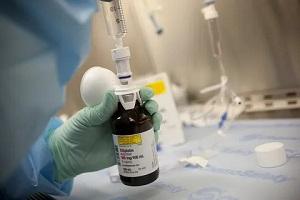Cisplatin, a platinum-based chemotherapy drug, has been a cornerstone in the treatment of various cancers since its introduction in the 1970s. Known for its efficacy in treating solid tumors such as testicular, ovarian, bladder, and lung cancers, cisplatin continues to play a critical role in oncology. The global cisplatin chemotherapy market is evolving, driven by advancements in cancer treatment, increasing cancer prevalence, and ongoing research and development.
Market Overview
The cisplatin chemotherapy market has witnessed significant growth over the past few decades. The increasing incidence of cancer globally is a primary driver for the demand for cisplatin. According to the World Health Organization (WHO), cancer is one of the leading causes of death worldwide, with approximately 10 million deaths in 2020. This high prevalence underscores the need for effective chemotherapy agents like cisplatin.
Key Market Drivers
Increasing Cancer Prevalence: The rising number of cancer cases worldwide is a significant factor propelling the cisplatin market. Aging populations and lifestyle changes contribute to this increase, necessitating effective treatment options.
Advancements in Cancer Treatment: Ongoing research in oncology has led to the development of more effective chemotherapy regimens. Cisplatin is often used in combination with other drugs to enhance its efficacy and reduce side effects, thereby maintaining its relevance in modern cancer therapy.
Government and Non-Government Initiatives: Various health organizations and governments are investing in cancer research and treatment. Initiatives aimed at improving cancer care infrastructure and increasing awareness also boost the market for chemotherapy drugs, including cisplatin.
Market Challenges
Despite its effectiveness, cisplatin chemotherapy faces several challenges:
Side Effects: Cisplatin is known for its severe side effects, including nephrotoxicity, neurotoxicity, and ototoxicity. These adverse effects can limit its use, especially in patients with pre-existing conditions.
Drug Resistance: Over time, some cancers develop resistance to cisplatin, reducing its effectiveness. This has led to a continuous search for new combinations and formulations to overcome resistance.
Availability of Alternatives: The development of new chemotherapy drugs and targeted therapies offers alternatives to cisplatin. These newer treatments can sometimes provide similar or better efficacy with fewer side effects.
Regional Insights
The cisplatin chemotherapy market is geographically segmented into North America, Europe, Asia-Pacific, Latin America, and the Middle East & Africa.
North America: The largest market for cisplatin due to the high prevalence of cancer, advanced healthcare infrastructure, and significant investment in research and development.
Europe: Holds a substantial market share, driven by high cancer incidence rates and robust healthcare systems.
Asia-Pacific: Expected to witness the fastest growth due to increasing cancer cases, improving healthcare infrastructure, and rising awareness about cancer treatments.
Latin America and Middle East & Africa: These regions are also experiencing growth, albeit at a slower pace, due to improving healthcare access and rising cancer awareness.
Future Prospects
The future of the cisplatin chemotherapy market looks promising, with ongoing research aimed at improving its efficacy and reducing side effects. Innovations such as targeted delivery systems and combination therapies hold the potential to enhance the therapeutic outcomes of cisplatin. Additionally, the development of personalized medicine and biomarkers could help identify patients who would benefit the most from cisplatin therapy.


